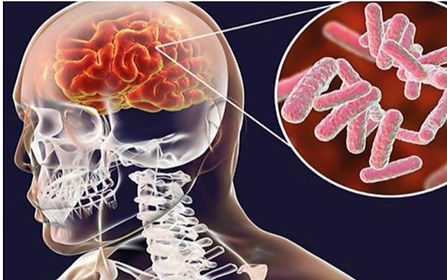
ALLIANCE FOR GOOD HEALTH

Vaccine Preventable Diseases in Bolivia
Our program supports all individuals to receive vaccines to remain up to date with the recommended vaccinations, including recommended boosters.
The following is a list of current Immunizations available:
Tuberculosis (TB)

TB is caused by mycobacterium tuberculosis. It commonly infects the lungs, but it can if infect the meninges causing tuberculous meningitis (TBM) or spread throughout the body -miliary disease. Complications include blindness, deafness, paraplegia, diabetes insidious, mental retardation, or death.
Diptheria

Diphtheria is a serious infection caused by strains of a bacteria that makes a toxin. It can cause a pseudo-membrane that covers the tonsils, pharynx, larynx, or nares and can extend into the trachea present as a scaling rash or ulcers.
Tetanus

Spores of tetanus bacteria are everywhere in the environment, including soil, dust, and manure. The spores develop into bacteria when they enter the body. Common sign is tightening of the jaw muscles, but it can lead to being unable to open the mouth and having trouble swallowing and breathing.
Whooping Cough

Whooping cough, also known as pertussis, is a very contagious respiratory illness caused by a type of bacteria called Bordetella pertussis. Complication included apnea, pneumonia, convulsion, encephalopathy and even death.
Haemophilus influenzae (Hib)

Is a type of bacteria which can cause pneumonia, meningitis, blood stream infections, ear and skin infections and epiglottis.
Poliomyelitis

Polio is a disabling and life-threatening disease caused by the poliovirus. The virus spreads from person to person and can infect a person’s spinal cord, causing paralysis or the membrane around the brain causing meningitis.
Rotavirus Diarrhea

It is a disease is characterized by vomiting and watery diarrhea for three to eight days with fever and abdominal pain. Additional symptoms include loss of appetite and dehydration.
Mumps

Causes puffy cheeks and tender, swollen jaw as a result of swollen salivary glands referred to as parotitis by the mumps virus. Mumps can occasionally cause complications, especially in adults. They include inflammation of the testicle (orchitis),ovaries (oophoritis) and/or breast tissue (mastitis). Also, can cause inflammation in the pancreas (pancreatitis), the brain (encephalitis) and of the tissue covering the brain and spinal cord (meningitis) and deafness.
Measles

It is highly contagious and can lead to serious complications such as pneumonia, encephalitis, and death. In pregnancy it can lead to premature birth and low birth weight. Long term complications include subacute sclerosing panencephalitis which is fatal.
Rubella (German Measles)

It is caused by the rubella virus. The most serious complication from rubella infection is the harm it can cause a pregnant woman’s developing baby. She can have a miscarriage, or her baby can die just after birth. Also, she can pass the virus to her developing baby who can develop serious birth defects such as heart problems, loss of hearing and eyesight, intellectual disability, and liver or spleen damage.
Yellow Fever

It is caused by a virus that is spread to people by the bite of an infected mosquito. Most people will not have symptoms, but some develop yellow fever illness with symptoms including sudden onset of fever, chills, severe headache, back pain general body aches, nausea, vomiting, fatigue, weakness A few people will develop a more severe form of the disease. For 1 out of 7 people who have the initial symptoms, the more sever disease follows: high fever, yellow skin (jaundice), bleeding, shock, and organ failure. Severe yellow fever disease can be deadly, 30-60% die.
Pneumococcal Disease

It can present in various forms such as pneumonia, meningitis, blood infection, sepsis, middle ear infection, and sinus infection. Anyone can get pneumococcal infection, children to adults and you can die from it.
Influenza (Flu)

The flu can cause mild to severe illness, and at times can lead to death. The symptoms include: fever or feeling feverish/chills, cough, sore throat, runny or stuffy nose, muscle or body aches, headaches, fatigue, vomiting and diarrhea (this is more common in children than adults).
Human Papillomavirus (HPV)

HPV is responsible for 90% of anal and cervical cancers, about 70% of vaginal and vulvar cancers, 60% of penile cancers. and 60-70% cancers in the back of the throat. Most of the time the HPV infection resolves on its own. However, if the virus persists in the body it can cause cancer.
COVID-19

Persons infected with COVID-19 have had a wide range of symptoms from mild to severe illness. Symptoms may appear 2-14 days after exposure to the virus. Seek Emergency Medical Attention when having: - Trouble breathing - Persistent pain or pressure in the chest - New confusion - Inability to wake or stay awake - Pale, gray, or blue-colored skin, lips, or nail beds, depending on skin tone. Long-COVID can start 4 weeks after any type of COVID infection. However, it is more common after severe infections or non-vaccinated individuals. Symptoms include: - Tiredness or fatigue that interferes with daily life - Symptoms that get worse after physical or mental effort - Fever - Difficulty breathing or shortness of breath - Cough - Chest pain - Fast-beating or pounding heart - Difficulty thinking or concentrating - Headache - Sleep problems - Lightheadedness - Pins-and-needles feelings - Change in smell or taste - Depression or anxiety - Diarrhea - Stomach pain - Joint or muscle pain - Rash - Changes in menstrual cycles